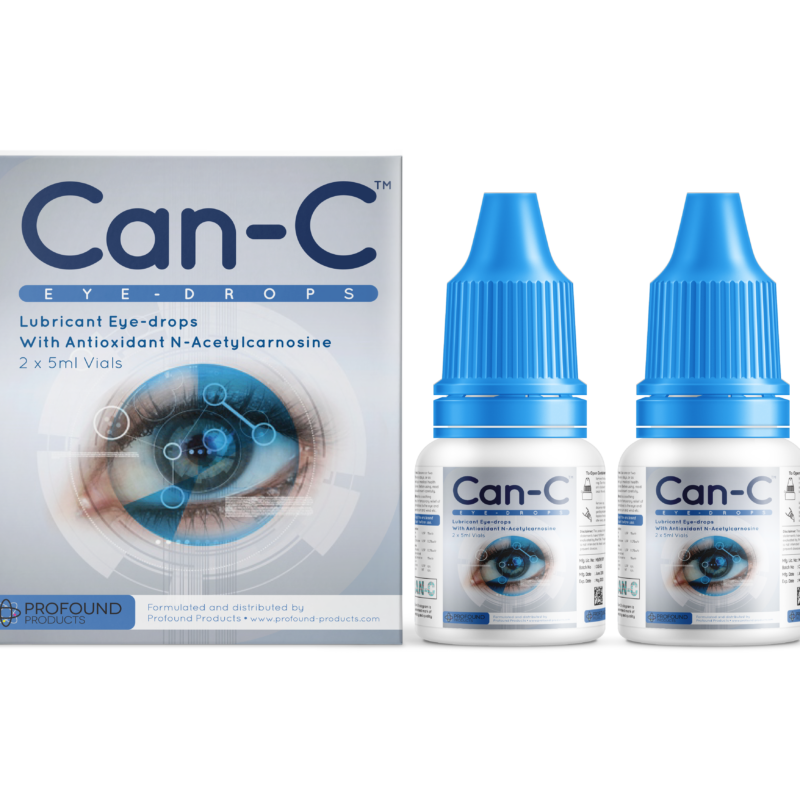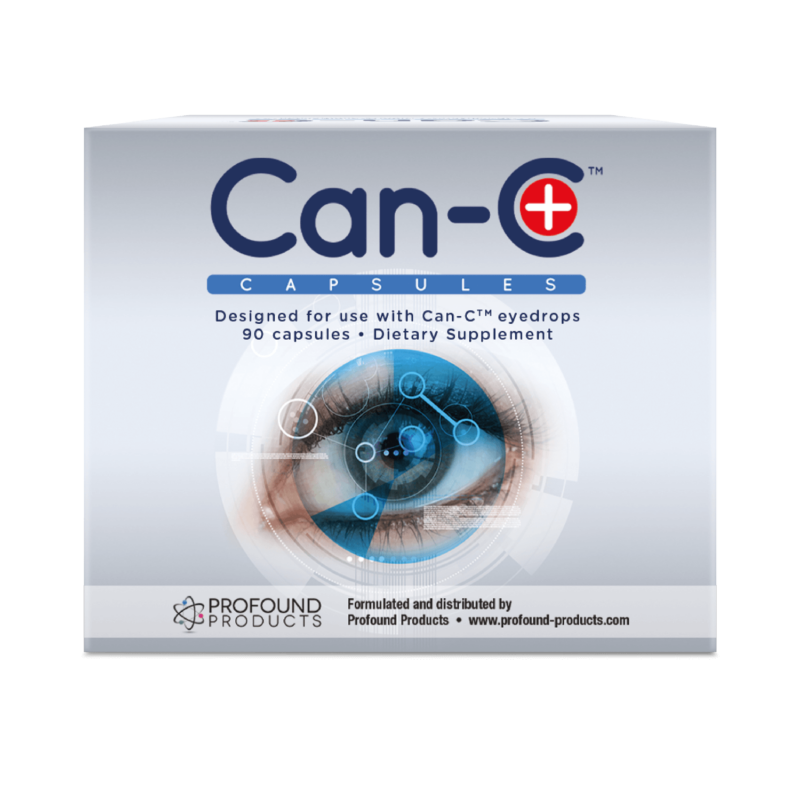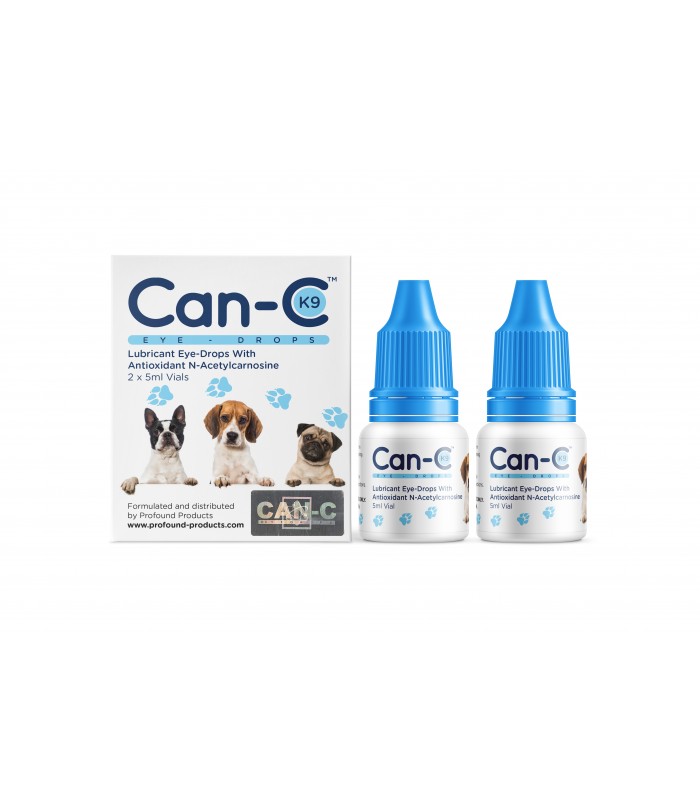NAC is it the cure for Cataract?
In the East and particularly in Russia over the last several years, they have been researching a special analogue of the di-peptide carnosine. This particular form is known as n-acetylcarnosine or NAC and it has been proven to be highly efficacious in the treatment of cataract and may also present a case for the prevention of the same. This article is about the case for NAC and the problems associated with senile-cataract.
Cataract is the leading cause of blindness and accounts for about 42% of all such cases worldwide, and this is in-spite of the availability of effective surgical treatment. Today we have the appalling situation where more than 17 million people around the world are blind because of cataract and 28,000 new cases are reported everyday. In developing countries, there is simply not a sufficient number of surgeons to perform cataract operations.
Cataract surgery is the most commonly performed surgical procedure in people over 65-years of age, and 43% of all visits to ophthalmologists by Medicare patients in the US are directly associated with cataract.
Meanwhile, approximately 25% of the population over 65 (and about 50% over 80) have a serious loss of vision due to cataract. Since this is the population that is most susceptible to lens opacification and as this section of the population is expected to increase dramatically, the numbers of individuals with cataract is set to explode!
For example, the World Health Organization anticipates that within the next 25-years, that 20% of the population will be 65 or older. Furthermore, the single largest growing section of the population are those over 85 and their actual numbers are expected to quadruple in about the same period. Such a rapidly burgeoning older population can only increase the numbers of individuals suffering from cataract.
Of course, there is also the economic impact. Currently 1.35 million cataract operations are performed annually in the United States alone and Medicare estimates the annual cost at $3.5 billion! There’s no doubt about it, cataract is a major disease.
It is also becoming apparent that it will not be possible to eliminate the overall problems (including blindness), caused by cataract with the current procedures. With so many people presenting the afflictions of maturity onset cataract, it appears not to be possible to train in-time, the necessary numbers of surgeons required. In-fact, as-it-stands, it looks likely that the total number of people with serious eye-disorders because of cataract, will increase dramatically worldwide.
Surgical complications
There is another aspect to the problem that is rarely discussed. While cataract surgery is generally recognised as being one of the safest operations, there is a significant complication rate. For example, in the United States 30% to 50% of all patients having cataract extraction, develop opacification of the posterior lens capsule within two years and require further lazer treatment.
Since the number of cataract operations is so large, even a small percentage of complications represents a significant number of people. Of the patients having cataract surgery, 0.8% have retinal detachments, 0.6% to 1.3% are hospitalized for corneal edema (or require corneal transplantation), and 0.1% present endophthalmitis.
Thus, aside from secondary cataract, about 2% of the 1.35 million (or approximately 27,000 individuals), just in the US each year, develop serious complications as a result of cataract surgery.
It is therefore difficult to support the argument that cataract research is unimportant with statistics such as those cited above. The large and growing number of people blind with cataract and the significant complication rate, should be sufficient reason to increase cataract research.
The considerable discomfort experienced by patients as their vision diminishes, and the complete loss of accommodation resulting in the removal of the lens should also be recognised. Besides the possible complications, an artificial lens just does not have the overall optical qualities of a natural lens.
A medical solution is required that will maintain the transparency of the lens. Even if the development of cataract can be delayed by 10-years, the overall benefits would be highly significant.
The development of NAC
NAC presents the first major leap forward in the treatment and possible prevention of senile cataract.
As a bio-engineering company, they have developed a proprietary method of producing extremely high purity NAC, that has proven itself to be a suitable ophthalmic drug for the non-surgical treatment of age-related cataracts. Yet it also displays high efficacy and physiological tolerance.
NAC has a highly statistical and very significant clinical success rate for patients within 3-12 months of treatment. Not surprisingly, they had been quick to ensure that its NAC has worldwide patents, including its use for cataract. It is also interesting to note that NAC eye-drops are patented for use in open-angle glaucoma, but as yet, the research for that disorder remains unpublished. [Ed.- We are keen to report on NAC’s benefit for glaucoma as soon as it becomes available, especially as this is an eye-disorder that is extremely difficult to treat].
Human trials
Carnosine eye-drops were used in a clinical trial to treat 96 patients aged 60 and above. All the patients had senile cataract in various degrees of maturity. The duration of the disease in these patients ranged between 2 and 21 years.
Firstly, the researchers stopped the patients use of all other anti-cataract drugs. Then the patients instilled 1 or 2 drops into each eye 3 or 4 times a day, for a period of 3 to 6 months.
The level of eyesight improvement and the change of lens transparency was considered as an evaluation index. The results showed that there was a pronounced effect on primary senile cataract, the effective rate was 100% (i.e. all patients experienced an improvement). For the more mature senile cataract (i.e. those who had had the cataract the longest time, in some cases more than 20-years) the effective rate was still an extremely impressive 80%.
These are remarkable results considering that the best that could normally be expected would be a slight improvement, a halt to the progression and under normal (i.e. non-treated) circumstances a continual worsening of the disease.
Importantly, it was also noted that there were no side effects noted in any of the cases.
Another Russian study was designed to document and quantify the changes in lens clarity over a 6 to 24 month period for 49 volunteers. Their average age was 65 and all suffered from senile cataract of a minimal to advanced opacification.
The patients received either a 1% solution of NAC eye-drops or a placebo, as 2-drops twice a day into each eye. The patients were then evaluated at 2 and 6 month periods. The tests consisted of ophthalmoscopy (glare test), stereocinematagraphic (slit-image) and retro-illumination (photography). A computerized digital analysis then displayed the light scattering and absorbing effects of the centers of each lens.
At 6-months, 88.9% of all eyes treated with NAC had an improvement of glare sensitivity (lowest individual score was a 27% improvement, right the way up to a 100% improvement). 41.5% of all eyes treated with NAC had a significant improvement of the transmissivity of the lens, but perhaps most importantly 90% of the eyes treated with NAC showed an improvement in visual acuity. Meanwhile, in the placebo group there was little change in eye quality at 6-months and a gradual deterioration at 12 to 24 months.
Importantly, this study also showed that at 24-months the NAC treated group, (who already had significant improvement to the quality of their eyesight), sustained these results with continued use of the NAC eye-drops.
Once again, no significant side effects were noted in any cases throughout the 2-year period.
Another interesting study also evaluated patients between the ages of 48 and 60, who had various degrees of eyesight impairment, but who did not have the symptoms of cataract. After a course of treatment ranging from 2 to 6 months the conclusion was, that the eye-drops alleviated eye-tiredness and continued to improve eyesight (i.e. there was more clear vision). The subjects reported that the treatment “brightened” and “relaxed” their eyes. This is an important indicator that the eye-drops have a value both for preventative purposes, as well as medical applications.
At this time, it is now believed that carnosine eye-drop treatment has been applied to over one thousand patients with senile cataract in China and Russia, (those countries are home to the principal researchers behind the work). Clear evidence is emerging that NAC eye-drops are a safe, effective treatment and potential preventative against cataract.
NAC method of action
Cataract is a glycosylation problem. This reaction occurs when proteins became cross-linked (and hence impaired). The result of this reaction leads to the discoloration of the eye-lens to yellow and brown, and hence the impairment of vision. But, carnosine is known to compete on the molecule for the glycating agent and protect cellular structures against aldehydes. Therefore, carnosine can slow and help to prevent proteins from becoming cross-linked, (and in this case from becoming cataract).
NAC has been shown to be highly resistant to carnosinase, (the natural enzyme that breaks down L-carnosine into histamine etc.). An experiment on rabbits showed that NAC eye drops allow themselves to be broken down into L-carnosine once inside the eye’s aqueous humor, (a process that occurs within 15 to 30 minutes after application of the eye-drops).
L-carnosine is an excellent anti-oxidant and is particularly effective against potent free-radicals, especially the Superoxide and the Hydroxyl. It is therefore presumed, that the anti-oxidant role of L-carnosine (within the aqueous humor) is a major factor, in slowing and preventing the appearance of cataract.
However, when L-carnosine eye-drops were used there was no presence of L-carnosine in the aqueous humor (even after 30-minutes). This may be because L-carnosine is broken down early into histamine etc., before it reaches the aqueous humor. So, NAC may act as a “carrier” for L-carnosine delivering it to where it is needed, [Ed.-see the next section of this article for further comparisons of NAC to L-carnosine].
The powerful anti-oxidant abilities of carnosine within the eye, and the prevention of cross-linking, helps to explain why NAC is effective at preventing and slowing cataract, perhaps even halting it. But it doesn’t explain why NAC has been shown to reverse cataract. But we may already know the answer.
For example, it is known that when carnosine is delivered in high doses, that it can reverse protein-aldehyde cross-linking, (this reaction is normally very difficult to reverse). Under these circumstances, carnosine has been shown to have a “rejuvenating” effect on cultured cells.
Cataract develops when anti-oxidant defense is exhausted, leading to the cross-linking of the lens crystallins, (producing a clouded lens, and hence impaired eyesight). We can assume that the regular use of a 1% NAC eye-drop (as used in the clinical trials), delivers “a high-dose of carnosine capable of reversing the lens cross-linking,” and hence the reduction and eradication of cataract.
So in conclusion, NAC eye-drops appear to act as a universal anti-oxidant, both in the lipid phase of the cellular lens membranes, and in the aqueous environment. NAC eye-drops reduce and protect the crystalline lens from oxidative stress-induced, cross-linking damage.
NAC compared to L-carnosine
We may logically ask the question; why have NAC eye-drops been shown to have this action upon cataract, and yet L-carnosine (which is its sister di-peptide) appears to have little benefit? one of the principal Russian researchers behind the clinical trials with NAC eye-drops gave us this reply to that very same question:
“I believe that the application of L-carnosine for the treatment of human cataracts is misleading. This is because L-carnosine readily becomes a substrate for the activity of natural peptidases (i.e. carnosinase) in the aqueous humor. So much so, that there is no sign of L-carnosine in the aqueous humor within 15 minutes after instillation. Furthermore, I consider that L-carnosine eye-drops may even be harmful for eyes because it gradually releases histamine, which, located as it would be in the presence of the eye-lens is a very toxic agent. However, NAC eye-drops are resistant to hydrolysis with natural carnosinase. Therefore, NAC is the only currently known agent which reverses and prevents human cataracts.”
In conjunction with Dr. Hipkiss and Dr. Kyriazis information, we can conclude that while some of the benefits of oral L-carnosine may derive after carnosinase breaks down into histamine- [Ed.- see Dr. Kyriazis interview article in this issue for further details], that in the case of eye-drops, L-carnosine must be avoided.
It is also interesting to note that a study by Dr. Boldyrev et al, also concluded that the oral use of NAC was far less likely to be broken down by carnosinase than L-carnosine [Ed.- see Dr. Kyriazis interview in this issue for further details].
Buyer beware!
The scientists also makes it quite clear that “ordinary” NAC will not be of much use in the treatment of senile-cataract. This is because there are many synthesized “carnosines” and their biological and medicinal activity strongly varies and depends on the mode of their obtention.
For example, if carnosine is extracted from meat muscle substances, the biological and anti-oxidant activity is very low. This is presumably due to the contamination of the “pure” carnosine substance by heavy metal salts and proteins and other related impurities. It is very difficult to purify carnosine chromatographically, as the compound chelates divalent metal ions very heavily and the biological and anti-oxidant activities can not be regenerated during the purification procedures.
In conclusion, there were many forms of carnosine which were abandoned in the Russian studies because of their lack of anti-cataract and anti-oxidant ability in the human eye.
However, the scientists behind Can-C have developed a synthesized pure NAC which has biological activity and has been well controlled and proven in human lens studies. This is the same type that has been used in the clinical trials.
Cataract is a widespread age-related affliction and NAC eye-drops appear to be a highly efficacious and safe treatment for cataract. As such, I suspect that this supplement is going to become one of the most important new discoveries, and will have a major impact on the way that cataract is controlled.
References
1. Boldyrev AA, Dupin AM, Bunin Aya, Babizhayev MA, Severin SE “The antioxidative properties of carnosine, a natural histidine containing di-peptide.” Biochem. Inrern., 1987, 15/6, 1105-1113.
2. Babizhayev MA et al “N-Acetylcarnosine, a natural histidine-containing di-peptide, as a potent ophthalmic drug in treatment of human cataracts.” Peptides (USA) 2001, 22(6): 979-994.
3. Babizhayev MA, Yermakova VN, Deyev Al, Seguin M-C “Imidazole-containing peptiomimetic NACA as a potent drug for the medicinal treatment of age-related cataract in humans.” J. Anti-Aging Medicine 2000, 2, 43-62.
4. Babizhayev MA, Yermakova VN, Semiletov yu A, Deyev Al “The natural histidine-containing di-peptide N-acetylcarnosine as an antioxidant for ophthalmic use.” Biochemistry (Moscow), 2000, 65, 588-598.
5. Babizhayev MA, Yermakova VN, Sakina NL, Evstigneeva RP, Rozhkova EA, Zheltukhina GA “N-Acetycarnosine is a prodrug of L-carnosine in ophthalmic application as antioxidant.” Clin. Chim. Acta., 1996, 254, 1-21.
6. Babizhayev MA, Bozzo Costa E “Composizioni farmaceutiche contenenti N-acetilcarnosina per il trattamento della cataratta.” A61K gruppo 37/00 cap 20122 MI 15.10.1993. Italian patent.
7. Babizhayev MA, Bozzo Costa E “Pharmaceutical compositions containing N-Acetylcarnosine for the treatment of cataract.” European Patent PCT/EP 94/03340 10.10.1994 Ref. SCB 238 PCT.
8. Babizhayev MA, Seguin M-C, Gueyene J, Evstigneeva RP, Ageyeva EA, Zheltukhina GA “L-carnosine and carcinine act as natural antioxidants with hydroxyl-radical-scavenging and lipid peroxidase activities.” Biochem J. 304, 509-516.
9. Babizhayev MA, “Antioxidant activity of L-carnosine, a natural histidine-containing di-peptide in crystalline lens.” Biochem. Biophys. Acta., 1989, 1004, 363-371.
10. Babizhayev MA, Deyev Al “Lens opacity induced by lipid peroxidation products as a model of cataract associated with retinal disease.” Biochim. Biophys. Acta., 1989, 1004, 124-133.
11. Babizhayev MA, Deyev Al “Free radical oxidation of lipid and thiol groups in genesis of cataract.” Biophysics (biofizika), 1986, 31, 119-125, Pergamon Journals Ltd.
eushi M, Watabe S, Ochi H (1966), Biochem. Biophys. Res. Commun. 223, 278-292.
13. Babizhayev MA, Deyev Al, Linberg LF “Lipid peroxidation as a possible cause of cataract.” Mech. Ageing Dev. 1988, 44, 69-89.
14. Boldyrev AA, “Problems and perspectives in studying the biological role of carnosine” International Center for Biotechnology, Department of Biochemistry, Lomonosov, Moscow State University.
15. Hipkiss A, (1998) Int. J. Biochem. Mol. Biol., 30, 863-868.
16. Boldyrev AA, Dupin A, Bunin A, Babizhayev MA, Severin SE (1987), Biochem. Int., 15, 1107-1113.
17. Wang AM, Ma C, Xie H, F Shen “Medical application of carnosine” Department of Biochemistry and Neurobiology, Harbin Medical University, China.
18. World Health Organisation, Ageing and Health, Website: http://www.who.int/ageing/scope.htm


